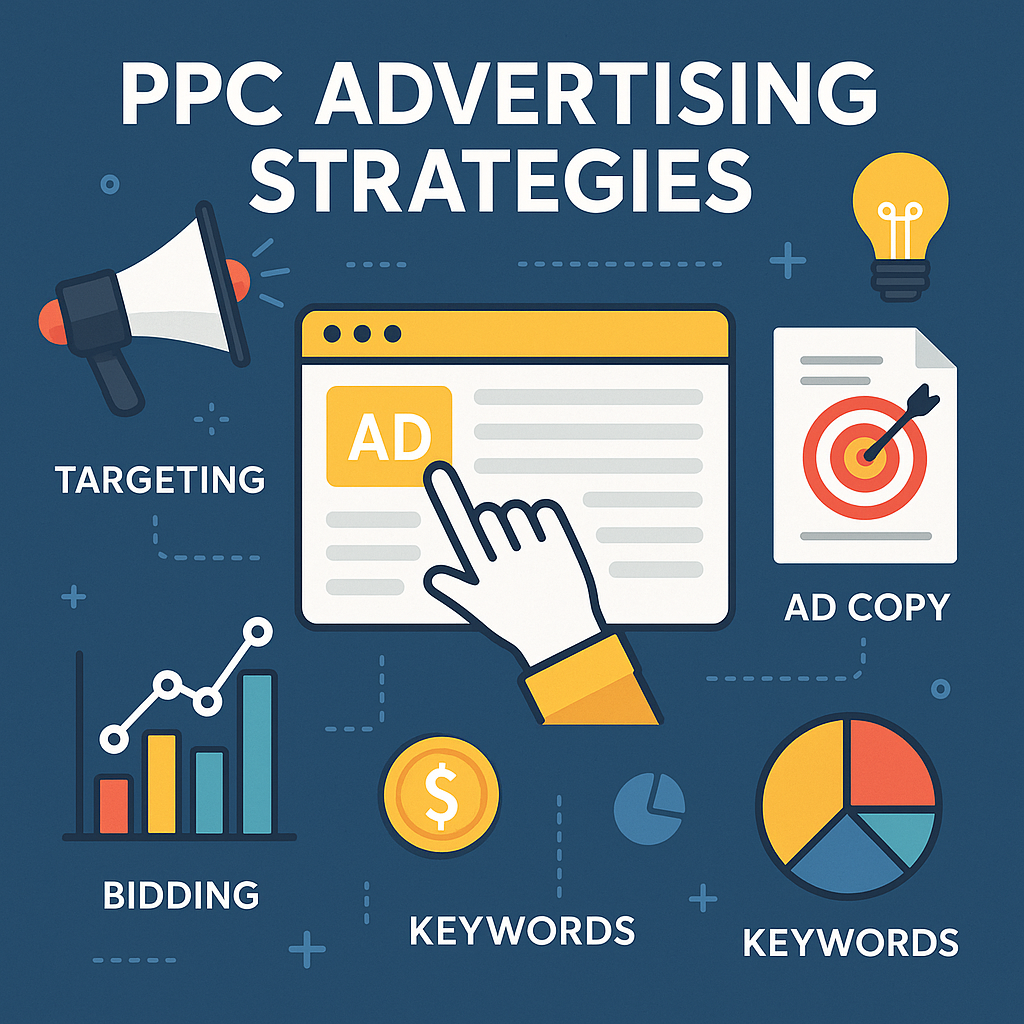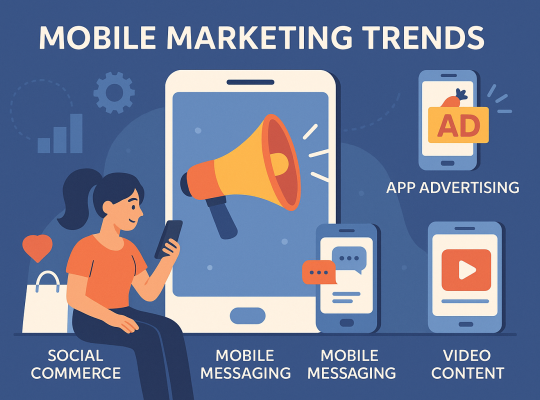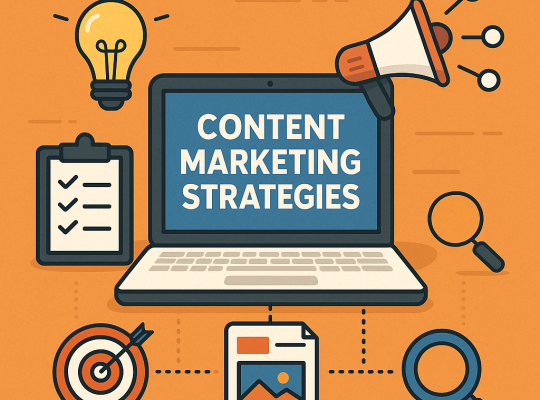Are you ready to elevate your online advertising game? Pay-per-click (PPC) advertising can be a powerful tool for driving traffic and boosting sales, but it’s not without its challenges. Mastering PPC advertising requires a strategic approach, sharp analytics, and a keen eye for detail. In this article, we’ll unveil 10 proven strategies designed to enhance your return on investment (ROI) and transform your campaigns from average to exceptional. Whether you’re a seasoned marketer or just starting out, these actionable insights will help you navigate the complexities of PPC, optimize your ad spend, and achieve measurable results. Say goodbye to wasted budgets and hello to a more profitable advertising strategy. Let’s dive in and unlock the secrets to PPC success!
Understanding PPC Advertising: A Comprehensive Overview
Pay-per-click (PPC) advertising is an essential component of digital marketing, allowing businesses to purchase visits to their sites rather than earning them organically. Every time a user clicks on an ad, the advertiser pays a fee, which is why it’s crucial to ensure that each click is valuable. PPC can be a highly effective way to generate traffic, but it requires a deep understanding of the mechanisms behind it to maximize its potential. From Google Ads to social media platforms like Facebook and LinkedIn, PPC campaigns can be tailored to reach a specific audience and achieve diverse marketing objectives.
The fundamental structure of PPC advertising involves selecting relevant keywords, creating compelling ads, and setting a budget. Advertisers bid on keywords that they believe their target audience is searching for, and when users type these keywords into a search engine, the ads appear at the top of the search results. The beauty of PPC lies in its measurability and adaptability; you can track every aspect of your campaign and make data-driven decisions to enhance its performance. This dynamic nature of PPC ensures that you can fine-tune your approach to achieve the best possible results.
Moreover, PPC advertising is not just about driving traffic; it’s about driving the right kind of traffic. This means that your ads should be designed to attract users who are most likely to convert, whether that conversion is a purchase, a form submission, or another desired action. Understanding the various elements of PPC, such as quality scores, ad extensions, and conversion tracking, is crucial for optimizing your campaigns and ensuring that every dollar spent contributes to your overall marketing goals. Mastering PPC requires continuous learning and adaptation, making it both a challenging and rewarding venture.
The Importance of Keyword Research in PPC Campaigns
Keyword research is the backbone of any successful PPC campaign. Without the right keywords, your ads may never reach the intended audience, or worse, they might attract the wrong audience, leading to wasted ad spend. Effective keyword research involves identifying the terms and phrases that potential customers use when searching for products or services similar to yours. Tools like Google Keyword Planner, SEMrush, and Ahrefs can provide valuable insights into keyword volume, competition, and cost-per-click (CPC).
One of the key aspects of keyword research is understanding the intent behind the search queries. Keywords can be broadly categorized into three types: informational, navigational, and transactional. Informational keywords are used by users looking for information, navigational keywords are used to find a specific website, and transactional keywords indicate a readiness to make a purchase. For PPC campaigns, focusing on transactional keywords can lead to higher conversion rates as these users are more likely to take action.
Additionally, long-tail keywords, which are longer and more specific phrases, can be particularly valuable in PPC campaigns. Although they typically have lower search volumes, they often have higher conversion rates because they capture users further along in the buying cycle. By targeting a mix of high-volume and long-tail keywords, you can create a balanced strategy that attracts both a broad and highly targeted audience. Regularly updating and refining your keyword list based on performance data is essential to maintaining the effectiveness of your PPC campaigns.
Crafting Compelling Ad Copy that Converts
Creating engaging and persuasive ad copy is an art form in itself and a critical factor in the success of your PPC campaigns. Your ad copy is the first impression potential customers have of your brand, and it needs to capture their attention and compel them to click. An effective ad copy should be clear, concise, and focused on the benefits of your product or service. Highlighting unique selling propositions (USPs) and addressing the pain points of your target audience can make your ads more appealing.
One of the most effective techniques in crafting compelling ad copy is to use action-oriented language. Verbs that encourage immediate action, such as “buy,” “get,” “discover,” or “learn,” can significantly increase click-through rates (CTR). Moreover, creating a sense of urgency with phrases like “limited time offer” or “act now” can motivate users to take action quickly. It’s also important to include relevant keywords in your ad copy to ensure that it aligns with the search queries and improves your ad’s relevance score.
Testing different variations of your ad copy through A/B testing can provide valuable insights into what resonates with your audience. This involves creating multiple versions of your ad with slight variations in headlines, descriptions, or calls to action and analyzing their performance. Continuous optimization based on the data collected from these tests can help you refine your ad copy to achieve better results. Remember, the goal of your ad copy is not just to attract clicks but to attract clicks that lead to conversions.
Targeting the Right Audience: Demographics and Behavior
Targeting the right audience is crucial for the success of your PPC campaigns. Understanding your audience’s demographics, such as age, gender, location, and income level, allows you to tailor your ads to their specific needs and preferences. Most PPC platforms, including Google Ads and Facebook Ads, offer advanced targeting options that enable you to reach a highly specific audience. Utilizing these options effectively can ensure that your ads are seen by the people most likely to convert.
In addition to demographics, targeting based on user behavior can significantly enhance the effectiveness of your PPC campaigns. Behavioral targeting involves analyzing users’ online behavior, such as their browsing history, past purchases, and engagement with similar products or services. By understanding the behavior patterns of your target audience, you can create personalized ads that resonate with their interests and needs. Remarketing, for example, is a powerful PPC strategy that targets users who have previously visited your website but did not convert. These users are already familiar with your brand, making them more likely to respond to your ads.
Furthermore, leveraging audience segmentation can help you create more relevant and personalized ad experiences. Segmenting your audience based on factors such as purchase history, engagement level, or lifecycle stage allows you to create tailored ads that address the specific needs of each segment. This targeted approach not only improves the relevance of your ads but also increases the likelihood of conversions. Regularly reviewing and updating your audience segments based on performance data can help you stay aligned with the evolving preferences of your target audience.
Budgeting and Bidding Strategies for Maximum ROI
Effective budgeting and bidding strategies are essential to ensure that your PPC campaigns deliver the highest possible return on investment (ROI). Setting a budget involves determining how much you are willing to spend on your PPC campaigns over a specific period. It’s important to allocate your budget wisely across different campaigns and ad groups based on their performance and potential ROI. Regularly monitoring your spend and making adjustments as needed can help you avoid overspending and ensure that your budget is used efficiently.
Bidding strategy plays a crucial role in the success of your PPC campaigns. Various bidding options are available on PPC platforms, each with its own advantages and suitability for different campaign goals. Manual CPC bidding allows you to have full control over your bids, while automated bidding strategies, such as Target CPA (Cost Per Acquisition) or Target ROAS (Return on Ad Spend), use machine learning to optimize bids based on your desired outcomes. Choosing the right bidding strategy depends on your campaign objectives, budget, and the competitive landscape.
Moreover, it’s important to continuously optimize your bids based on performance data. Analyzing metrics such as click-through rates, conversion rates, and cost per conversion can provide insights into the effectiveness of your bidding strategy. Adjusting bids for high-performing keywords and reducing bids for underperforming ones can help you maximize your ROI. Additionally, implementing bid adjustments for different devices, locations, or times of day can further enhance the efficiency of your PPC spend. A well-optimized bidding strategy ensures that you are getting the most value out of your ad spend.
Utilizing A/B Testing to Optimize Your Ads
A/B testing, also known as split testing, is a powerful technique for optimizing your PPC ads. It involves creating two or more variations of an ad and testing them against each other to determine which one performs better. This process allows you to identify the elements of your ads that resonate most with your audience and make data-driven decisions to improve their effectiveness. A/B testing can be applied to various components of your ads, including headlines, descriptions, images, and calls to action.
One of the key benefits of A/B testing is that it provides actionable insights into user preferences and behavior. By testing different variations of your ads, you can uncover what drives higher click-through rates and conversions. For example, you may find that certain headlines or images are more compelling to your audience, or that specific calls to action lead to better engagement. These insights can help you refine your ad copy and design to create more effective ads that deliver better results.
It’s important to approach A/B testing systematically and with a clear hypothesis. Start by identifying the element you want to test and create variations that isolate that element. Run the test for a sufficient duration to gather meaningful data and ensure that the results are statistically significant. Once you have identified the winning variation, implement the changes and continue testing other elements to further optimize your ads. A/B testing is an ongoing process that requires continuous iteration and refinement to achieve the best possible performance.
The Role of Landing Pages in PPC Success
Landing pages play a crucial role in the success of your PPC campaigns. When users click on your ads, the landing page is where they are directed, and its quality can significantly impact their likelihood of converting. A well-designed landing page should provide a seamless and relevant experience that aligns with the ad they clicked on. This means that the content, design, and call to action on the landing page should be consistent with the ad and focused on guiding the user towards the desired action.
One of the key elements of an effective landing page is a clear and compelling call to action (CTA). The CTA should be prominently displayed and easy to understand, encouraging users to take the next step, whether it’s making a purchase, filling out a form, or signing up for a newsletter. Additionally, the landing page should provide relevant and valuable information that addresses the user’s needs and reinforces the benefits of your product or service. Using persuasive copy, engaging visuals, and social proof, such as testimonials or reviews, can further enhance the credibility and appeal of your landing page.
Optimizing your landing pages for speed and mobile-friendliness is also essential for maximizing conversions. Slow-loading pages and poor mobile experiences can lead to high bounce rates and lost opportunities. Regularly testing and optimizing your landing pages for performance can help you identify and address any issues that may be hindering your conversion rates. By creating high-quality, relevant, and user-friendly landing pages, you can improve the overall effectiveness of your PPC campaigns and achieve better ROI.
Analyzing PPC Metrics: What to Track and Why
Analyzing PPC metrics is essential for understanding the performance of your campaigns and making informed decisions to optimize them. There are several key metrics that you should track to gain insights into the effectiveness of your PPC efforts. Click-through rate (CTR) is one of the most important metrics, as it indicates how many users clicked on your ad compared to the number of impressions it received. A high CTR suggests that your ad is relevant and engaging, while a low CTR may indicate that your ad copy or targeting needs improvement.
Conversion rate is another critical metric that measures the percentage of users who completed the desired action after clicking on your ad. This could be making a purchase, filling out a form, or any other goal you have set for your campaign. Monitoring your conversion rate helps you understand how well your landing pages and overall user experience are performing. Cost per conversion, also known as cost per acquisition (CPA), is the metric that tells you how much you are spending to acquire a single conversion. Keeping your CPA within a reasonable range is essential for maintaining a positive ROI.
Additionally, tracking metrics such as quality score, return on ad spend (ROAS), and impression share can provide valuable insights into the performance and efficiency of your PPC campaigns. Quality score is a measure used by Google Ads to evaluate the relevance and quality of your keywords, ads, and landing pages. A higher quality score can lead to lower CPCs and better ad placements. ROAS calculates the revenue generated from your ad spend, helping you assess the profitability of your campaigns. Impression share indicates the percentage of times your ads were shown compared to the total possible impressions, highlighting opportunities for increasing visibility. Regularly analyzing these metrics and making data-driven adjustments can significantly enhance the performance of your PPC campaigns.
Common PPC Mistakes to Avoid for Better Performance
Even experienced marketers can fall into common PPC pitfalls that can hinder the performance of their campaigns. One of the most frequent mistakes is neglecting to conduct thorough keyword research. Without a well-researched keyword list, your ads may not reach the right audience, leading to low click-through rates and poor conversions. It’s essential to continuously update and refine your keyword strategy based on performance data and changing market trends.
Another common mistake is failing to create targeted and relevant ad copy. Generic or irrelevant ads are unlikely to attract clicks or conversions. It’s important to craft ad copy that speaks directly to the needs and interests of your target audience. Additionally, not utilizing ad extensions is a missed opportunity to provide additional information and improve the visibility of your ads. Ad extensions, such as site links, callouts, and structured snippets, can enhance the appeal and effectiveness of your ads.
Furthermore, overlooking the importance of landing page optimization can significantly impact your PPC success. A poorly designed or irrelevant landing page can result in high bounce rates and low conversion rates. Ensuring that your landing pages are user-friendly, mobile-optimized, and aligned with your ad copy is crucial for maximizing conversions. Regularly testing and optimizing your landing pages can help you identify and address any issues that may be hindering your campaign performance. By avoiding these common mistakes and continuously refining your PPC strategy, you can achieve better results and a higher ROI.
Future Trends in PPC Advertising: Staying Ahead of the Curve
The world of PPC advertising is constantly evolving, and staying ahead of the curve requires keeping an eye on emerging trends and adapting your strategies accordingly. One of the key trends in PPC is the increasing use of automation and artificial intelligence (AI). PPC platforms, such as Google Ads, are incorporating more AI-driven features that automate bidding, targeting, and ad creation. Leveraging these tools can help you optimize your campaigns more efficiently and effectively.
Another significant trend is the growing importance of voice search. As more users turn to voice-activated devices, such as smart speakers and virtual assistants, optimizing your PPC campaigns for voice search is becoming increasingly important. This involves focusing on long-tail keywords and natural language queries that users are likely to use when speaking rather than typing. By adapting your PPC strategy to accommodate voice search, you can capture a larger share of this growing market.
Additionally, the rise of visual and video advertising is transforming the PPC landscape. Platforms like YouTube, Instagram, and TikTok offer new opportunities for engaging with your audience through visual content. Creating compelling video ads and leveraging visual ad formats can help you capture the attention of users in a crowded digital space. Staying informed about these and other emerging trends in PPC advertising can help you stay ahead of the competition and maintain the effectiveness of your campaigns.




